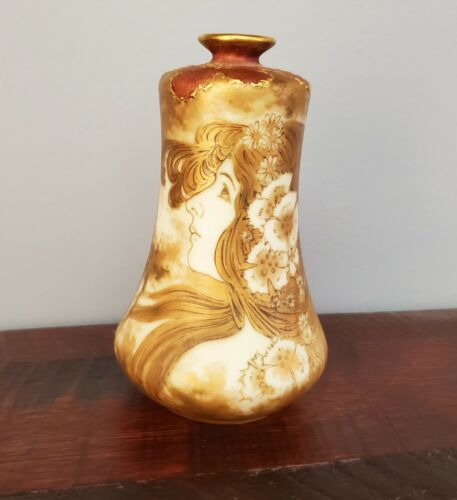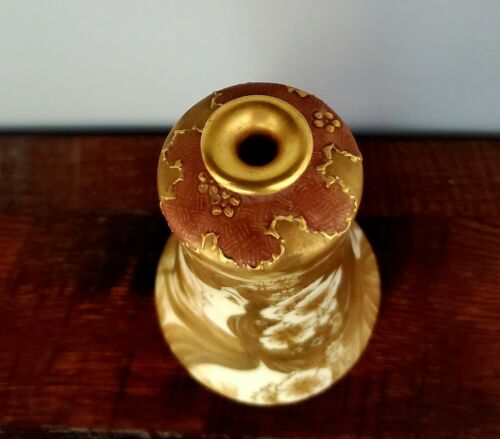-40%
Amphora Austrian Vase by Riessner, Stellmacher and Kessel
$ 1048.08
- Description
- Size Guide
Description
Amphora Austria Vase. Condition is "Used". Shipped with USPS Priority Mail.Fantastic Rare Art Nouveau Amphora Teplitz vase with a portrait of a woman with flowers in her hair and a forest in the background. This piece was made between 1894-1904 in the Turn-Teplitz region of Bohemia. The vase is by it RStK: Riessner, Stellmacher and Kessel. Their ceramic pieces were of such high quality that they were sold in finer shops such as Louis Comfort Tiffany of New York. Amphora portrait vases are hard to find, and this piece is unique in that the shape of the vase and this particular art nouveau woman design are not commonly found together. This vase is in excellent condition with no obvious imperfections. The colors do not look faded and their is no paint loss. There are no breaks, chips, or cracks in the ceramic. On the bottom is a faint "Amphora" inside of an oval. This is how RSt&K typically signed their pieces. Although unsigned, this piece is attributed to Nikolaus Kannhauser. The number "477" is also found on the bottom. About 5.25"H x 3"D at widest part.
From artnouveau.club: Amphora refers to some delicate pottery produced between 1894 and 1904 in the Turn-Teplitz region of Bohemia during the Art Nouveau times. In 1892, after 17 years as a leader in ceramics production, Alfred Stellmacher encouraged his son and sons-in-law to establish a porcelain manufactory. They were the first Amphora manufacturer. Named after its owners Riessner, Stellmacher and Kessel (RSt&K), and employing son-in-law Paul Dachsel, the firm consistently marked pieces with the word Amphora by the late 1890s and became subsequently known by that name. Their work was introduced in the United States in 1893 at the Chicago World’s Fair where they were given the "best in show" award. Their display at the St. Louis World’s Fair in 1904 also earned high accolades bolstering their reputation as pottery masters.




















